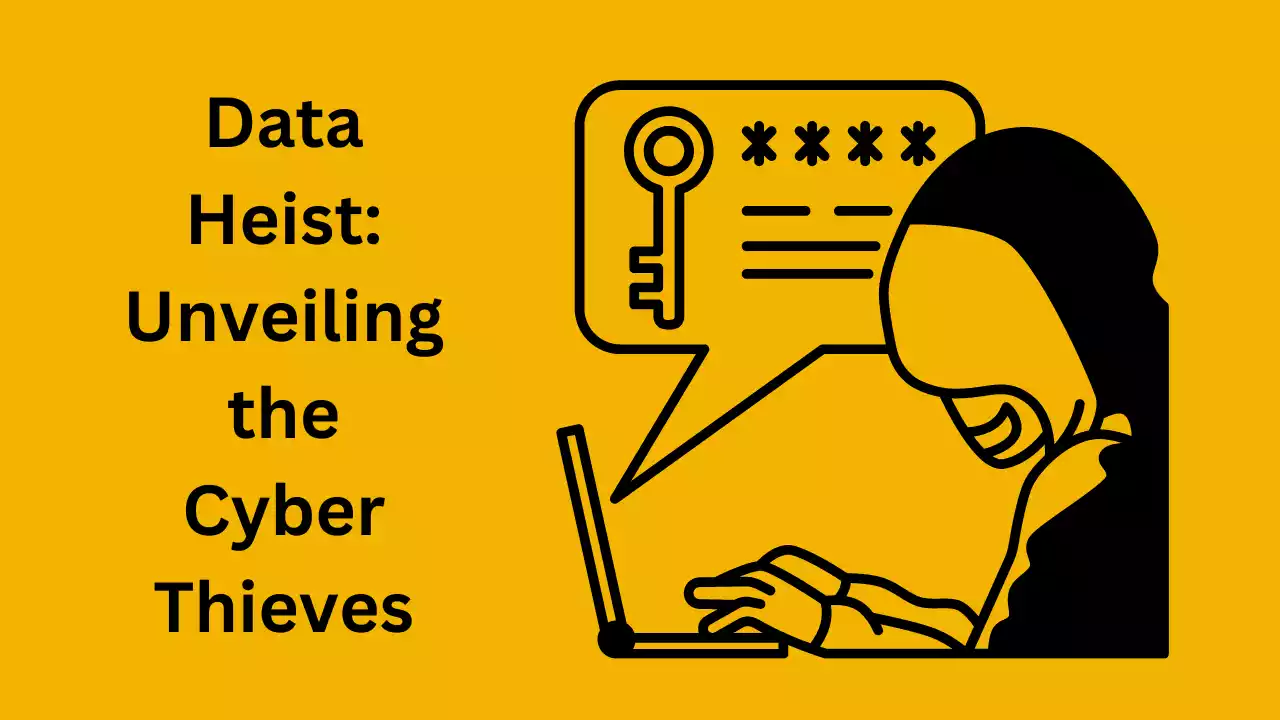In an era where data is often considered the new currency, the threat of cybercrime looms large. Among the myriad of cyber threats, data theft stands out as one of the most concerning, with hackers leveraging sophisticated techniques to infiltrate systems and pilfer sensitive information. The term “Data Heist” encapsulates the brazen act of cybercriminals breaking into networks to steal valuable data for personal gain or malicious intent. This gearupwindows article delves into the intricacies of data heists, shedding light on the methods employed by cyber thieves and the impacts of their nefarious activities.

The Anatomy of a Data Heist
A data heist typically begins with reconnaissance, where hackers meticulously scan networks and systems for vulnerabilities. These vulnerabilities may arise from outdated software, weak passwords, or human error such as phishing attacks. Once a vulnerability is identified, hackers exploit it to gain unauthorized access to the target system.
Upon gaining entry, cyber thieves deploy a variety of techniques to navigate through the network undetected. This may involve the use of malware, such as keyloggers or ransomware, to harvest credentials or encrypt valuable data. Alternatively, hackers may employ social engineering tactics to manipulate unsuspecting employees into divulging sensitive information.
Once inside the network, cybercriminals locate and exfiltrate the desired data. This could range from personal information such as credit card details and social security numbers to corporate secrets and intellectual property. The stolen data is then often sold on the dark web or used for purposes such as identity theft, financial fraud, or corporate espionage.
The Impacts of Data Heists
The ramifications of a data heist can be far-reaching and devastating. For individuals, the theft of personal information can result in identity theft, financial loss, and reputational damage. Moreover, the psychological toll of having one’s privacy violated can be significant, leading to feelings of vulnerability and distrust.
For businesses, the consequences of a data heist can be catastrophic. Beyond the immediate financial losses incurred from remediation efforts and regulatory fines, companies may suffer irreparable damage to their reputation and brand equity. Moreover, the theft of intellectual property can undermine competitiveness and innovation, jeopardizing the long-term viability of the organization.
In addition to the direct impacts on individuals and businesses, data heists can have broader societal implications. The erosion of trust in digital platforms and institutions can hinder economic growth and innovation, while also exacerbating social inequalities. Furthermore, the proliferation of cybercrime poses a significant challenge to law enforcement agencies and governments, requiring coordinated efforts to combat this evolving threat landscape.
Mitigating the Risk of Data Heists
Mitigating the risk of data heists requires a multi-faceted approach that encompasses technological, organizational, and regulatory measures. This includes investing in robust cybersecurity infrastructure, such as firewalls, intrusion detection systems, and encryption technologies, to fortify defenses against potential intrusions.
Moreover, organizations must prioritize cybersecurity awareness and training initiatives to empower employees with the knowledge and skills to identify and respond to cyber threats effectively. Implementing strong authentication mechanisms, such as multi-factor authentication, can also help prevent unauthorized access to sensitive systems and data.
From a regulatory standpoint, governments must enact legislation and regulatory frameworks that compel organizations to adhere to stringent cybersecurity standards and report data breaches in a timely manner. Furthermore, international cooperation and information sharing are essential to combatting cybercrime on a global scale, given the borderless nature of the digital landscape.
Conclusion
In conclusion, data heists represent a grave threat to individuals, businesses, and society at large. By understanding the methods employed by cyber thieves and implementing comprehensive cybersecurity measures, we can better safeguard against the devastating impacts of data theft and preserve the integrity of our digital infrastructure.
